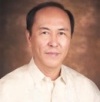Phl: Learning center for gov’t corruption
- Details
- Blog Content
- Hits: 5798
(First published in The Philippine Star issue of Jan. 31, 2013)
PROPER VENUE: The 500 or so delegates from 78 countries who have congregated in Manila to exchange notes on official corruption and how to fight it have come to the right place for their fifth Global Conference of Parliamentarians Against Corruption.
The visiting parliamentarians and government representatives who are here for their Jan. 30-Feb. 2 sessions at the Philippine International Convention Center can dispense with the speeches.
All they have to do is ask the local experts, namely their Filipino counterparts, and learn everything there is to know about corruption in government and why it is more fun(d) in the Philippines.
The more inquisitive among them can also look into the use of anti-corruption campaigns to harass political enemies and cover up the misdeeds of one’s barkada (cronies) and party mates.
* * *
EXHIBITS A & C: I do not know if President Noynoy Aquino will address the delegates. If he does, do not be surprised if he waves again his favorite Exhibits A & C: detained former President Gloria Macapagal Arroyo (“A”) and ousted Chief Justice Renato C. Corona (“C”).
President Aquino takes credit for Corona’s removal as if it is his handiwork and, therefore, achievement. In theory, the President, head of a separate branch, has nothing to do with the Congress’ impeaching, trying and removing a chief justice.
Having been kicked out with finality, it was just Corona’s bad luck that he was caught with millions in his bank accounts that were not declared in his Statement of Assets, Liabilities and Net Worth.
It does not matter if many of those who had accused and dragged him out for public ridicule were just as, if not more, guilty of exactly the same offense.
* * *
HATE-OBJECT: As for former president, now Pampanga representative, Gloria Arroyo, she has been chosen as the high-profile hate-object to highlight, in contrast, the virtues of the reigning President Aquino.
If one added up the public funds that Malacañang has accused her of stealing, the loot would run to billions. And if the jail sentences were to be served in series, she would have to rot in jail for three lifetimes.
But what is the score, really, some readers ask. I am a one-man operation (no staff), so I cannot research as fast and as detailed as I want. Anyway, below is my summary update on the Arroyo cases.
* * *
SCOREBOARD: Some of the cases against Ms Arroyo:
• Plunder case with respect to the Iloilo airport -- Dismissed by the Office of the Ombudsman for lack of evidence. The decision said “(a) cursory look at the allegations made by complainant shows that he did not allege, much less present, any evidence that … respondent Arroyo … acquired ill-gotten wealth in the manner described under Section 1(d) of the Anti-Plunder Law.”
• Plunder and graft charges on her alleged misuse of Overseas Workers Welfare Administration funds -- Dismissed by the Ombudsman for lack of evidence.
• Plunder case on the ZTE national broadband network deal -- Dismissed and downgraded to graft. The new case is also being touted to be flimsy, because even before the contract was implemented, then President Arroyo cancelled it.
• Electoral sabotage – This non-bailable case was the reason why Ms Arroyo was arrested in 2011 and prevented from seeking medical treatment abroad. But after finding weak the evidence filed by the complaining Commission on Elections, the Pasay court granted her petition for bail. She could have gone home free, but….
* * *
NO PLUNDER: To keep Ms Arroyo detained even after she was granted bail on the election case, another non-bailable charge was hurriedly filed, this time on her allegedly having plundered the confidential/intelligence funds (CIF) of the Philippine Charity Sweepstakes Office.
The PCSO plunder case is pending with the Sandiganbayan, with some of the accused, including Ms Arroyo, having petitioned for bail.
Last week, PCSO director Aleta Tolentino said during her cross examination as the main prosecution witness that they found no evidence that Ms Arroyo had acquired ill-gotten wealth with respect to the CIF. (One element of plunder is that the accused official must have amassed at least P50 million in illegal wealth.)
* * *
MARGINAL OK: The only basis for Ms Arroyo’s indictment in the PCSO case was her marginal “OK” of the request for additional CIF.
But the prosecution witness (Tolentino) admitted that the former President being then the Chief Executive was required by law and COA circulars to approve the request. Did the President’s performing her duty make her liable if the money was later misused by others down the line?
The CIF liquidation was approved by the Commission on Audit as per their certifications. For doing their job, COA officials led by former Chairman Reynaldo Villar and Regional Director Nilda Plaras were included in the plunder case!
This sets a dangerous precedent. State auditors may find themselves prosecuted for plunder for issuing liquidation reports and certifications to officials who happen to be perceived enemies of politicians in power.
* * *
WOBBLY CASE: The Office of the Ombudsman, an independent body, may have opened itself to questions with its having issued conflicting resolutions on the PCSO case.
In its resolution, the first panel of investigators said it found no evidence of plunder against the former president and her co-accused. But Ombudsman Conchita Carpio Morales disapproved that first resolution and formed a second panel of investigators.
The second panel quite expectedly recommended plunder charges, which Morales then approved.
Was the PCSO case, although wobbly, hurriedly filed just to keep Ms Arroyo in jail? Incidentally, until now the former president enjoys the presumption of innocence in all her cases.
* * *
 Visit the author's website to read more Postscripts.
Visit the author's website to read more Postscripts.
Follow him on Twitter @FDPascual.

